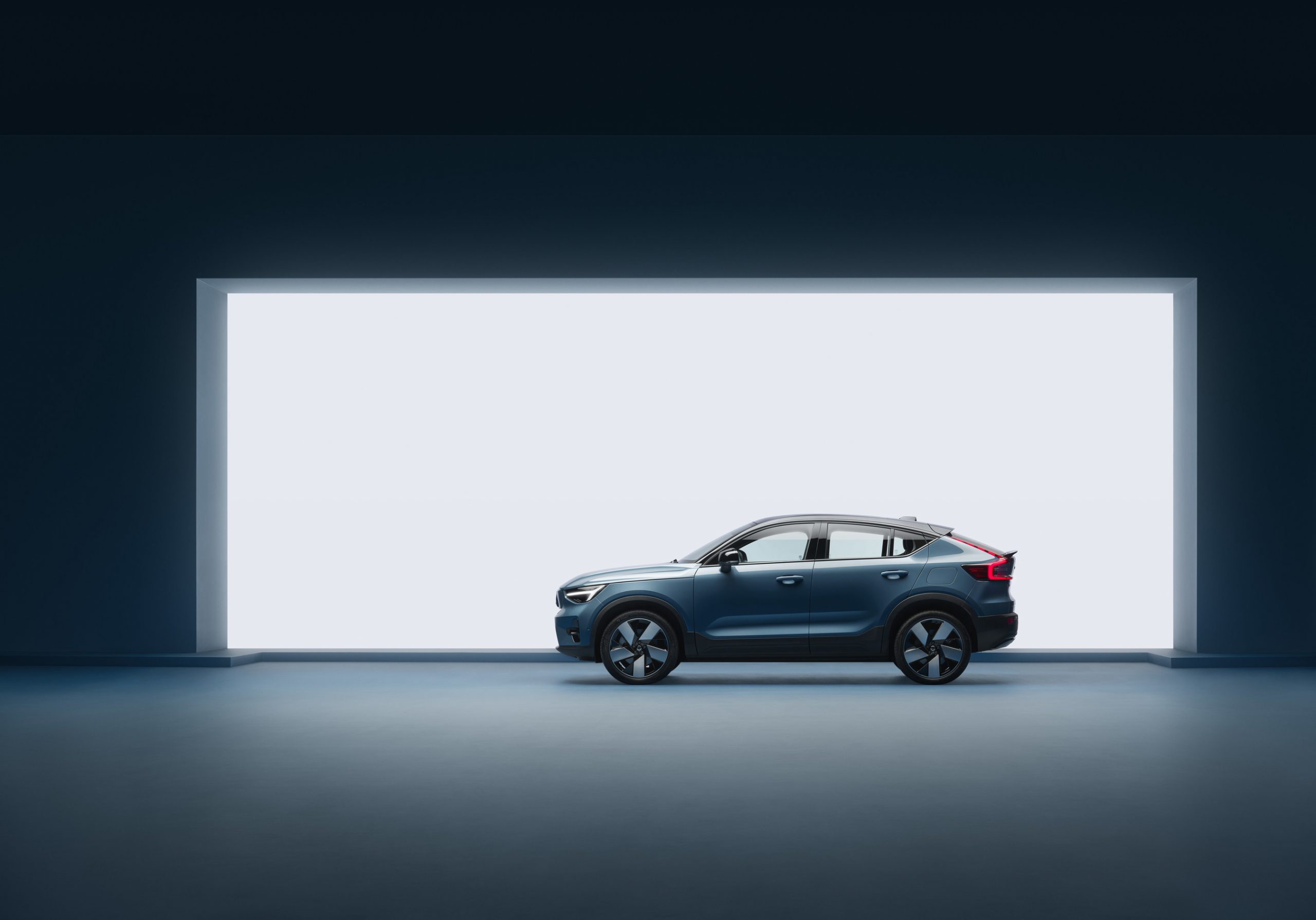RICHMOND HILL, ON, March 2, 2021 /CNW/ – The future of Volvo Cars is electric and the new Volvo C40 Recharge is the latest manifestation of its commitment to a zero-emission future.
The C40 Recharge has all the benefits of an SUV but with a lower and sleeker design. It is based on the CMA vehicle platform and the first Volvo model in history designed as pure electric only.

Following the introduction of the XC40 Recharge and now the C40 Recharge, Volvo Cars will roll out several additional electric models in coming years.
Already by 2025, it aims for 50 per cent of its global sales volume to consist of fully electric cars, with the rest hybrids. By 2030, it plans for every car it sells to be pure electric.
“The C40 Recharge represents the future of Volvo and shows where we are going,” said Henrik Green, chief technology officer. “It is fully electric, offered online only with a convenient care package and will be available for quick delivery. Getting a new Volvo was never this attractive.”
The rear of the C40 Recharge features a striking rear-end design to go with the lower roof line, while the new front design introduces a new face for electric Volvos and includes head lights with state-of-the-art pixel-technology.
Inside, the C40 Recharge provides customers with the high seating position that most Volvo drivers prefer, while it is available with a range of colour and deco options unique to the model. It is also the first Volvo model to be completely leather-free.
Like the XC40 Recharge, the C40 Recharge comes with one of the best infotainment systems on the market, jointly developed with Google and based on the Android operating system. It provides consumers with Google apps and services built-in, such as Google Maps, Google Assistant and the Google Play Store1.
Unlimited data enables superior connectivity and the C40 Recharge will receive software updates over the air1. That means it will continue to improve over time after it has left the factory.
The propulsion consists of twin electric motors, one on the front and one on the rear axle, powered by a 78kWh battery that can be fast-charged to 80 per cent in about 40 minutes2. It offers an anticipated range of around 420 km3, which is expected to improve over time via over-the-air software updates.
As announced earlier today, the fully electric C40 Recharge will be available online only. In line with its ambition of reducing complexity in its model offering and focus on attractive pre-selected variants, Volvo Cars has drastically simplified the consumer offering of the C40 Recharge.
When customers get a new C40 Recharge, it will come with a convenient care package that includes items such as service, warranty, roadside assistance, as well as insurance and home charging options1.
The C40 Recharge will go in production this fall4 and will be built alongside the XC40 Recharge at the Volvo Cars manufacturing plant in Ghent, Belgium.
*Notes to editors
|
1 |
Described features might be optional. Vehicle specifications and the exact customer offer may vary from one country to another, or not (yet) be available in all markets. |
|
2 |
Charging times are dependent on factors such as outdoor temperature, current battery temperature, charging equipment, battery condition and car condition. |
|
3 |
This vehicle has not yet been EPA rated. EPA-based range estimates for this vehicle are pending. Range estimates are based on preliminary estimates derived from the European Union’s Worldwide Harmonized Light Vehicle Test Procedure (WLTP). Real-world driving range will vary. Range information will be updated after EPA estimates for this vehicle are available. |
|
4 |
Consumer information available at https://www.volvocars.com/intl/v/cars/c40-electric |
Volvo Car Group in 2020
For the 2020 financial year, Volvo Car Group recorded an operating profit of 8.5 BSEK (14.3 BSEK in 2019). Revenue over the period amounted to 262.8 BSEK (274.1 BSEK). For the full year of 2020, global sales reached 661,713 cars (705,452), a decline of 6.2 per cent compared to 2019.
About Volvo Car Group
Volvo Cars was founded in 1927. Today, it is one of the most well-known and respected car brands in the world with sales of 661,713 cars in 2020 in about 100 countries. Volvo Cars has been under the ownership of the Zhejiang Geely Holding since 2010.
As of December 2020, Volvo Cars employed approximately 40,000 (41,500) full-time employees. Volvo Cars head office, product development, marketing and administration functions are mainly located in Gothenburg, Sweden. Volvo Cars head office for APAC is located in Shanghai. The company’s main car production plants are located in Gothenburg (Sweden), Ghent (Belgium), South Carolina (US), Chengdu and Daqing (China), while engines are manufactured in Skövde (Sweden) and Zhangjiakou (China) and body components in Olofström (Sweden).
Under its new company purpose, Volvo Cars aims to provide customers with the Freedom to Move in a personal, sustainable and safe way. This purpose is reflected into a number of business ambitions: for example, by the middle of this decade it aims for half of its global sales to be fully electric cars and to establish five million direct consumer relationships. Volvo Cars is also committed to an ongoing reduction of its carbon footprint, with the ambition to be a climate-neutral company by 2040.
Descriptions and facts in this press material relate to Volvo Cars’ international car range. Described features might be optional. Vehicle specifications may vary from one country to another and may be altered without prior notification.
Copyright © 2020 Volvo Car Corporation (or its affiliates or licensors).





